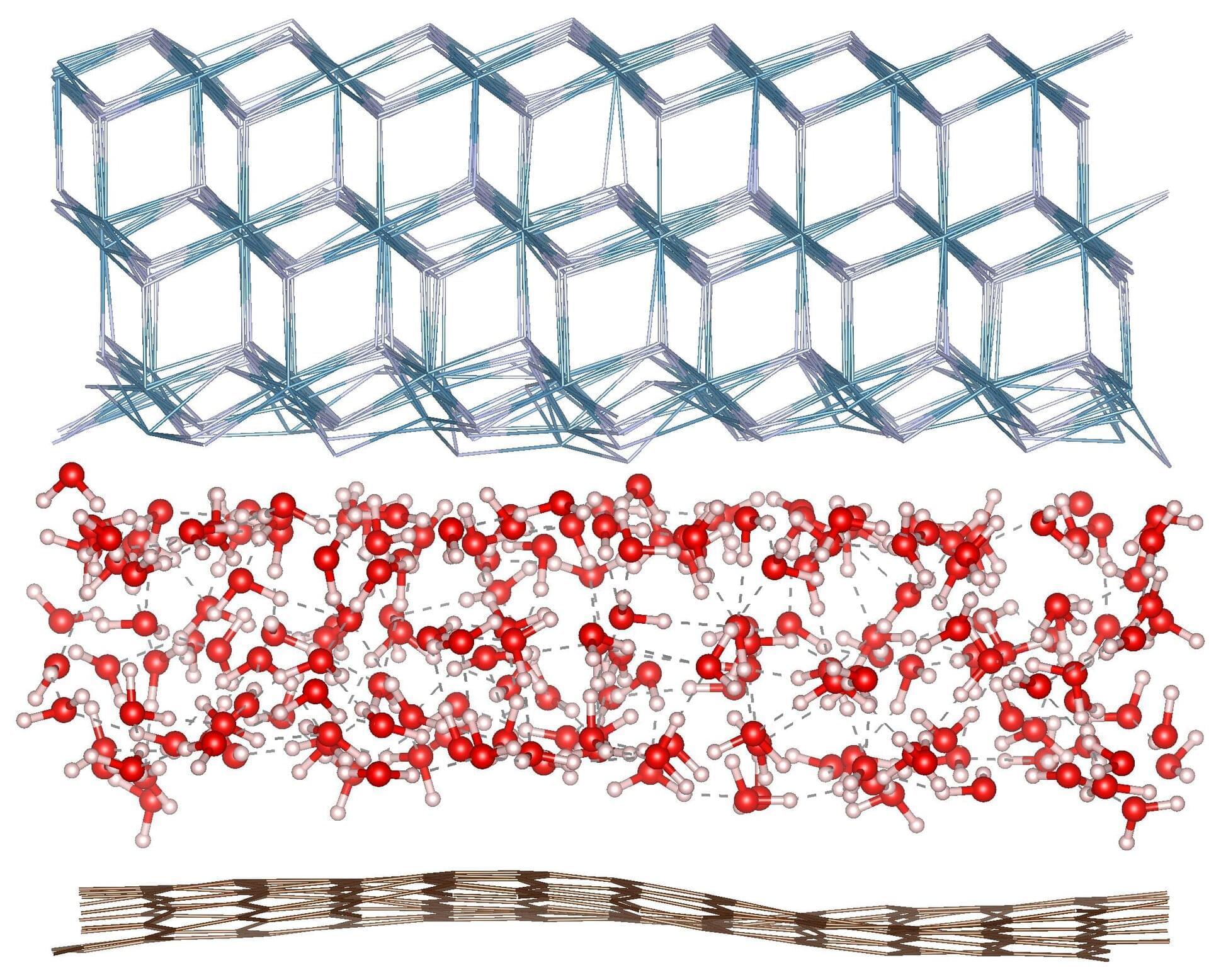Researchers at the Max Planck Institute for Polymer Research have upended assumptions about how water behaves when squeezed into atom-scale spaces. By applying spectroscopic tools together with the machine learning simulation technique to water confined in a space of only a few molecules thick, the team, led by Mischa Bonn, found that water’s structure remains strikingly “normal” until confined to below a nanometer, far thinner than previously believed.
The research, “Interfaces Govern the Structure of Angstrom-Scale Confined Water Solutions,” was published in Nature Communications.
Peering into the structure of a layer of water molecules that is only a few molecules thick is a formidable scientific challenge. The team fabricated a nanoscale capillary device by trapping water between a single layer of graphene and a calcium fluoride (CaF₂) substrate. They then wielded cutting-edge vibrational surface-specific spectroscopy—capable of detecting the microscopic structure of confined water, including the orientation and hydrogen-bonding of water molecules—to “see” the elusive few layers of water.
